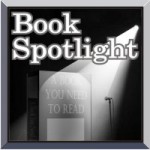 Hiroshima was in the news recently as the world observed the 70th anniversary of its bombing, and the bombing of Nagasaki three days later. We were proud to co-sponsor a commemoration of the event by Physicians for Social Responsibility at the Japanese American Historical Plaza in downtown Portland. In our article about the event we recommended the book “Last Train From Hiroshima” as a good read, and so we illuminate it further with this month’s Book Spotlight…
Hiroshima was in the news recently as the world observed the 70th anniversary of its bombing, and the bombing of Nagasaki three days later. We were proud to co-sponsor a commemoration of the event by Physicians for Social Responsibility at the Japanese American Historical Plaza in downtown Portland. In our article about the event we recommended the book “Last Train From Hiroshima” as a good read, and so we illuminate it further with this month’s Book Spotlight…
by Charles Pellegrino
(review from Powells.com)
Drawing on the voices of atomic-bomb survivors and the new science of forensic archaeology, Charles Pellegrino describes the events and aftermath of two days in August when nuclear devices detonated over Japan changed life on Earth forever. “Last Train from Hiroshima” offers readers a stunning “you are there” time capsule, gracefully wrapped in elegant prose. Charles Pellegrino’s scientific authority and close relationship with the A-bombs survivors make his account the most gripping and authoritative ever written.
At the narratives’ core are eyewitness accounts of those who experienced the atomic explosions firsthand, the Japanese civilians on the ground and the American flyers in the air. Thirty people are known to have fled Hiroshima for Nagasaki, where they arrived just in time to survive the second bomb. One of them, Tsutomu Yamaguchi, is the only person who experienced the full effects of the cataclysm at ground zero both times. The second time, the blast effects were diverted around the stairwell in which Yamaguchi had been standing, placing him and a few others in a shock cocoon that offered protection, while the entire building disappeared around them.
Review:
“Using a combination of firsthand accounts of Japanese A-bomb survivors, American aviators, and classified documents of government officials, Pellegrino reconstructs two horrifying days and their aftermath when the age of atomic warfare was introduced over Japan. He is fascinated with the ‘strange alchemy’ of these cruel weapons (‘One ten-millionth of a second later, a sphere of gamma rays escap[ed] the core at light speed’) as the bomb fell on Mrs. Aoyam tending her garden at Point Zero, literally before she could see it coming. Pellegrino is equally interested in the grotesque effects the blasts in Hiroshima and Nagasaki inflicted on the human body with its gamma rays, neutron spray and poisonous black rain. The stories of the few Japanese survivors includes a group of 30 civilians fleeing from Hiroshima to Nagasaki where they arrived to endure the second bomb, are heart-stopping. Pellegrino dissects the complex political and military strategies that went into the atomic detonations and the untold suffering heaped on countless Japanese civilians, weaving all of the book’s many elements into a wise, informed protest against any further use of these terrible weapons.
EXTRA: Pellegrino’s book, first released in 2010, raised questions because one source had falsely claimed to be an engineer on the Hiroshima mission, and two other sources’ names were changed without acknowledgement. The book was recalled by its publisher at the time, and the issues have been fixed for the 2015 edition. We have both copies in our library for your enjoyment.












